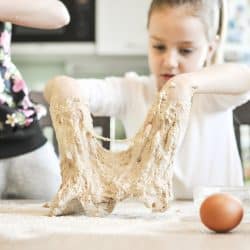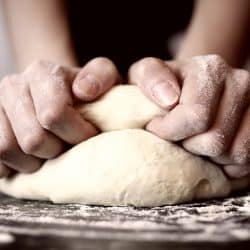Making pizza is complicated. Like cakes, you have to make considerations to make sure it comes out perfectly! One issue that troubles many who try to make pizza is the sticking. More specifically, pizza will stick on the tray, ruining the hours of work you have gone through. If you want to learn how to prevent the pizza from sticking to the tray, we have researched the issue and found some answers.
There are some steps you can take to prevent the pizza from sticking to the tray. The first step is coating the tray with flour. If you do not want to use flour, you can use fine polenta, cornmeal, or semolina. The second step is making the dough less sticky. You can add more cornmeal and flour to the dough. Be careful with how much cornmeal you use as it can burn and smoke in the oven.
Of course, there is still a lot more to cover. Baking the perfect pizza takes time and practice. Even if you take the correct precautions, the dough can still end up sticking. We will have to cover more ways to prevent this from occurring. If you would like to know the additional steps, keep reading ahead.
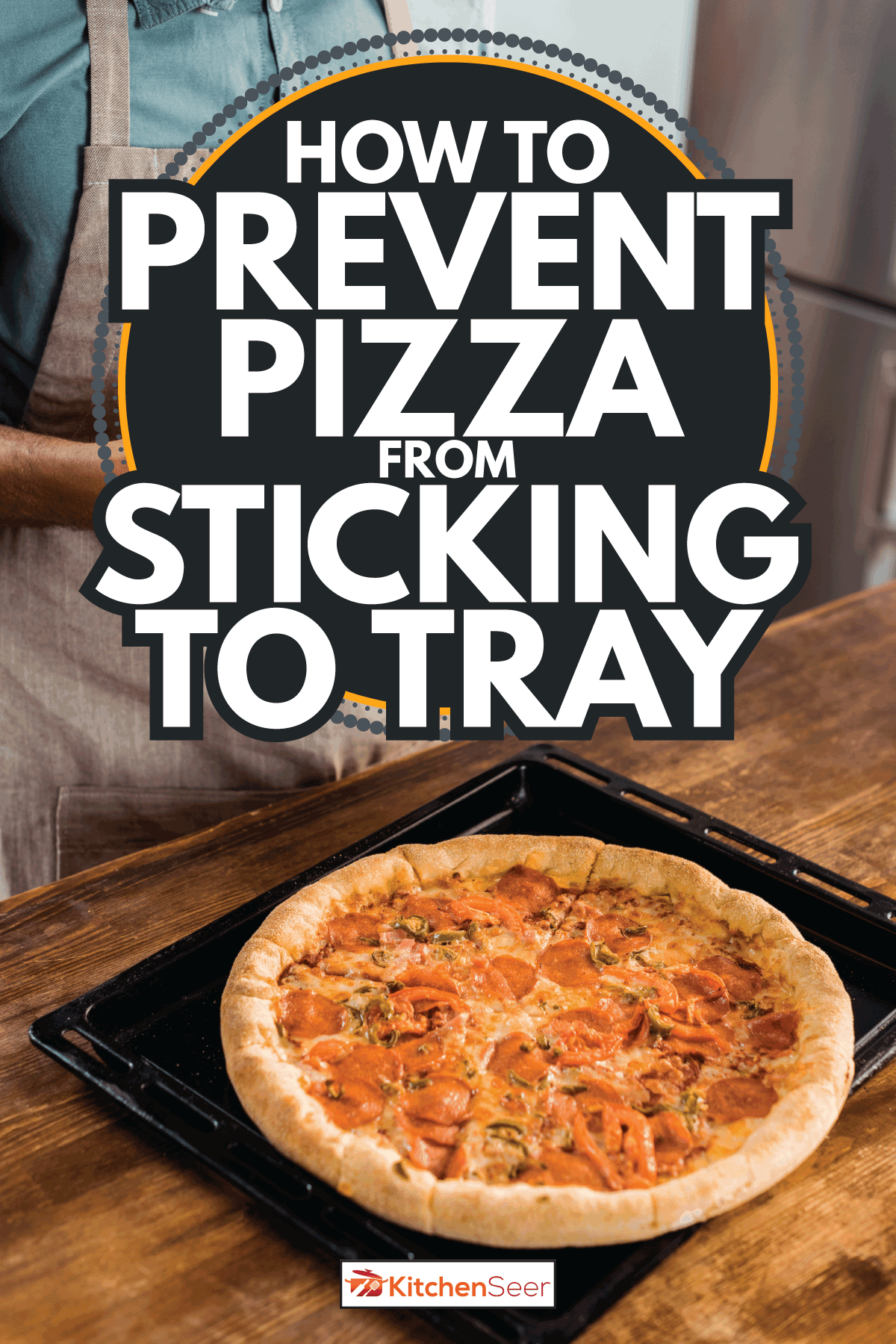
Why Did My Pizza Stick To The Tray?
The first step to preventing our pizzas from sticking to the board is to figure out why it is sticking in the first place. The first culprit can be the recipe you use for the dough. When you first start mixing the ingredients, the dough will be very wet. However, as the process goes on, the dough will absorb the water.
At its initial stage, it should be sticky to the touch. After around 20 minutes, you should be dealing with a dough that is not too sticky and requires less kneading. If it is still sticky and wet at this stage, you will need to address this issue before moving to the next step.
To give you a visual representation of how the dough should look like, here is a YouTube video to help:
As you can see, the dough does not stick too much. Additionally, a bit of flour is spread on the tray and hands to prevent sticking. However, there are alternatives you can choose if you do not want to use flour.
How To Fix Sticky Dough
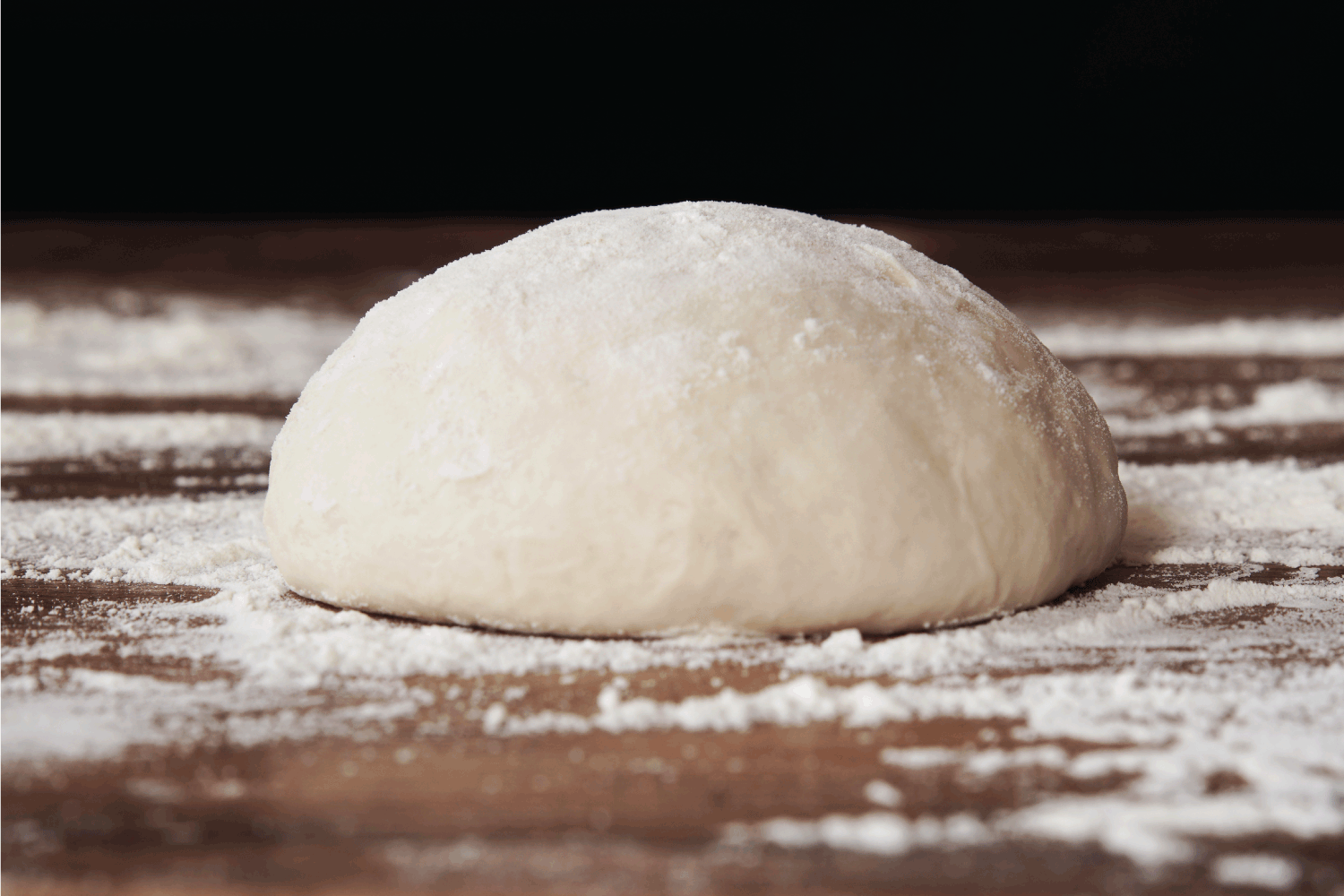
If you want to reduce how much the dough sticks, you can add flour. However, make sure to add it sparingly. The dough may be wet and sticky; That does not mean you want the dough to be dry and tough. Lightly sprinkle in the flour or use a tablespoon as a measure until you get the desired texture.
If flour is not your cup of tea, you can opt to use olive oil to work with the dough. A drizzle of olive oil can help avoid a sticky dough without messing with flour proportions. Additionally, it will give the dough a softer texture when it comes out of the oven, giving it a nicer chew. For a visual representation of how to do this, here is a YouTube video to help:
From The Countertop To The Oven
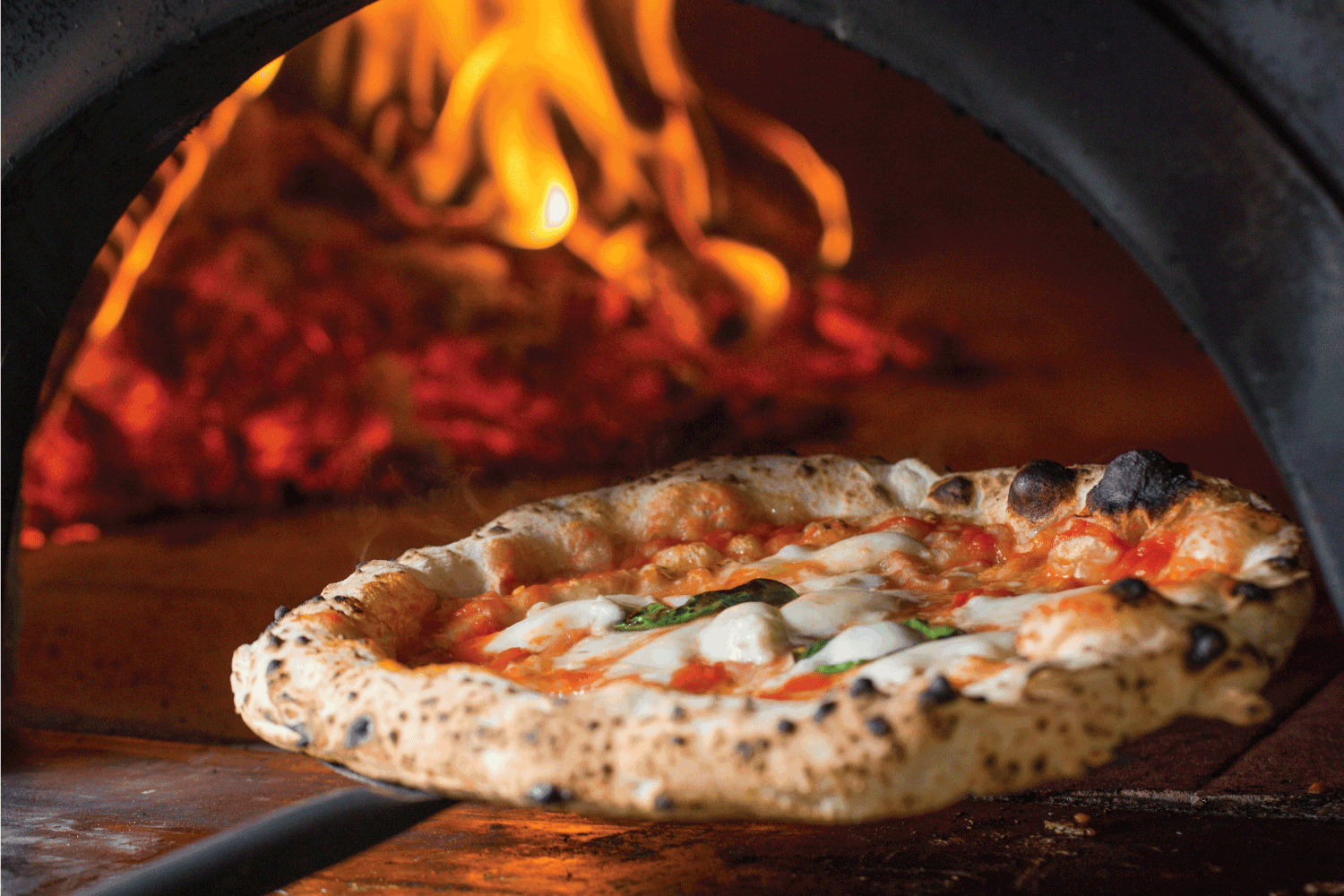
From the countertop to the tray, the dusting you use could matter to you. For example, flour is a standard ingredient used to prevent the dough from sticking on the tray. But, what if you could use something that has this capability along with some added flavor?
You heard that correctly! Some suggest you use cornmeal to dust the surface where you will place the pizza. People use flour or cornmeal to give the dough something to stick to. However, flour does not have a distinct taste. Cornmeal, on the other hand, does!
So, if you want to add some flavor, cornmeal is the way to go. If you would like to keep things the same, go with flour. You can not go wrong with either.
Appropriate Way To Insert The Tray Into The Oven
How the pizza enters the oven depends on the surface you use. In our case, the pizza tray, we need to make sure it goes in appropriately. Otherwise, it will not cook too well. If it does not cook properly, the pizza will likely stick to the tray.
Different materials require varying conditions. As you may know, cooking pizza on a stone baking board would need you to preheat the oven and the board. You would then need to transfer the pizza onto the stone using a pizza peel. These conditions are not the same with a pizza pan/tray.
You have two options to choose from, either preheat the pan/tray or coat it with olive oil before you put it in the oven. If you go with the first option, you will need to cover it with bits of flour to prevent sticking. The second option gives the tray a light coat of oil to prevent the dough from clinging.
In either case, make sure to preheat the oven. Once you reach the desired temperature, put in the pizza. Pizza does not cook well in ovens with gradual temperature changes.
Additional Considerations
Of course, the dough is not the only factor to consider. Toppings are another thing that can cause your pizza to stick. If you add too many toppings, it will slow down the cooking process. It can lead to undercooked or overcooked pizza. The former will cause the pizza to stick on the tray.
Additionally, make sure to get rid of any holes in your pizza dough. If there is a hole, it can allow the toppings to fall through. Once it falls through, it will lead to uneven cooking of the pizza. All in all, it will also cause the pizza to stick on the tray.
How Do You Get Pizza Off The Tray?
Depending on what you are using the tray for, there are methods to move the pizza off. If you used the tray to prepare the pizza and are ready to transfer it onto a pizza stone, you can use a pizza peel to do this. Make sure to get a wooden peel as it gives minimal occurrence for sticking. If you are using a metal peel, make sure to heat it a bit to prevent condensation.
Click here to see this wooden peel on Amazon.
To avoid ruining the pizza's shape, try to deploy it in the oven in one swift motion. Try not to shake it as it may stick to the surface you are working with and mess with the overall shape. However, not all of us have access to a peel.
Another method to get the pizza off the tray is by a preventative measure. By preventative measure, we mean preparing the pizza on parchment paper. You can use the tray as a peel to transfer it to another surface.
Are Pizza Trays With Holes Better?
You can not go wrong with any tray you decide to use for cooking a pizza. However, the trays do have their advantages. Trays with holes are better for thinner pizzas. It allows the heat to work directly on the pizza base, cooking the pizza faster. Though, that also comes at a detriment.
Click here to see this pan on Amazon.
Since it cooks quicker, that means thicker pizzas would not cook well on them. It does, however, give you a crispy base on thinner pizzas. So, if you are thinking of making thin pizza, a tray with holes is a great choice.
Do You Grease A Pizza Pan With Holes?
Of course, with the many holes present, is it harder to grease the pan? Not exactly. Though, you may need to work over a sink to avoid oil dripping on your floors.
The first way is by using a nonstick cooking spray on the surface. This method might make too much of a mess. So, the alternative is to rub the surface with a thin layer of oil. If that takes too long for you, you can also use a cooking brush to rub oil on the pan's surface.
Can I Use Parchment Paper On A Pizza Stone?
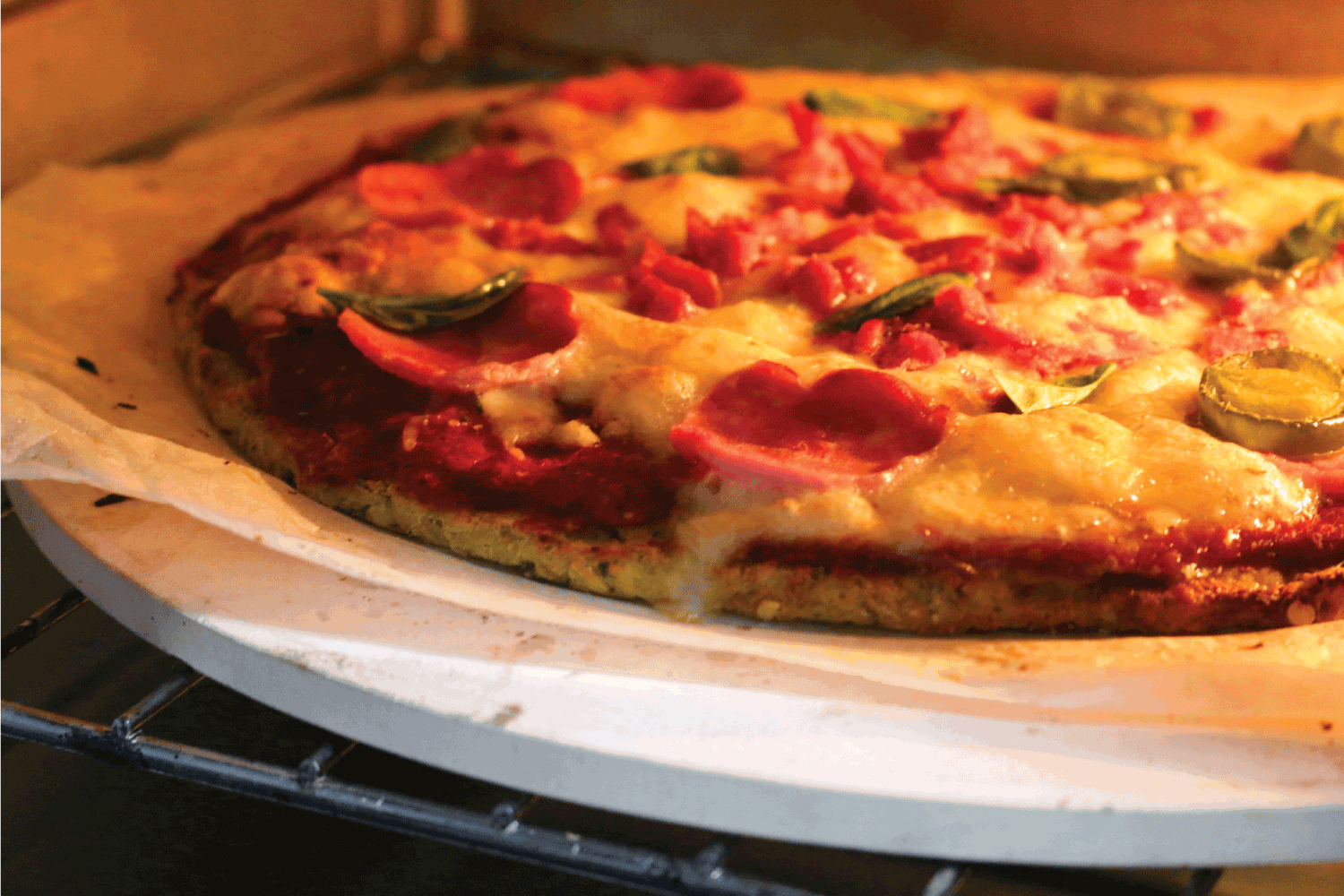
As you may have seen above, some do recommend using parchment paper to help prevent sticking. However, there is still some concern over it burning in the oven! Yes, that concern is credible. However, the main issue of concern is how long it takes to cook the pizza.
If the recipe needs the pizza to bake for longer than 20 minutes, there is a chance that the parchment paper will burn. But, if it can bake for 20 minutes or less, it would not turn brittle enough for that to happen. Still, if you want to be on the safe side, go for a wooden peel to prevent sticking.
Final Takeaway
Cooking pizza is not going to turn out in your favor right away. However, by learning some techniques, we can inch closer to perfecting a dish that everyone loves! We hope you found the information you need.
Before you go, do you have any other concerns? What about kneading speed? If you want to know what kneading speed your KitchenAid should at, check out our post here.
Want to know how long to knead bread? We also have information in that area. For more information on how to knead bread, check out our post here. Until next time!



